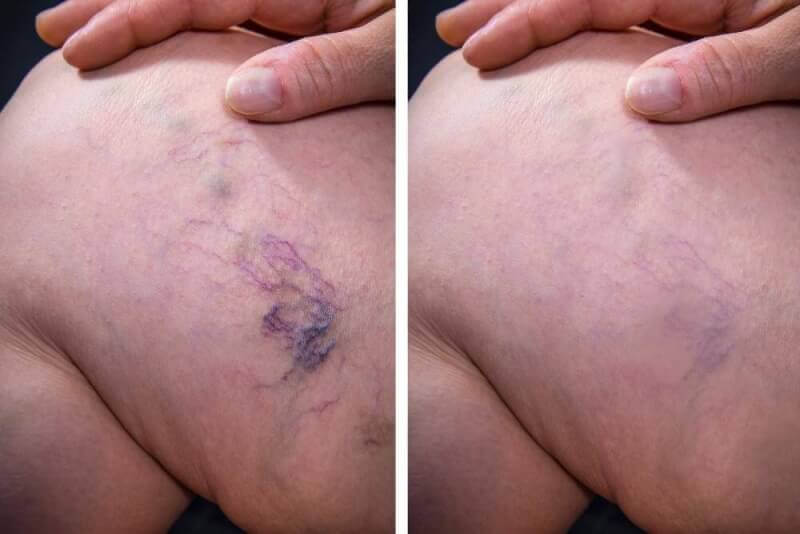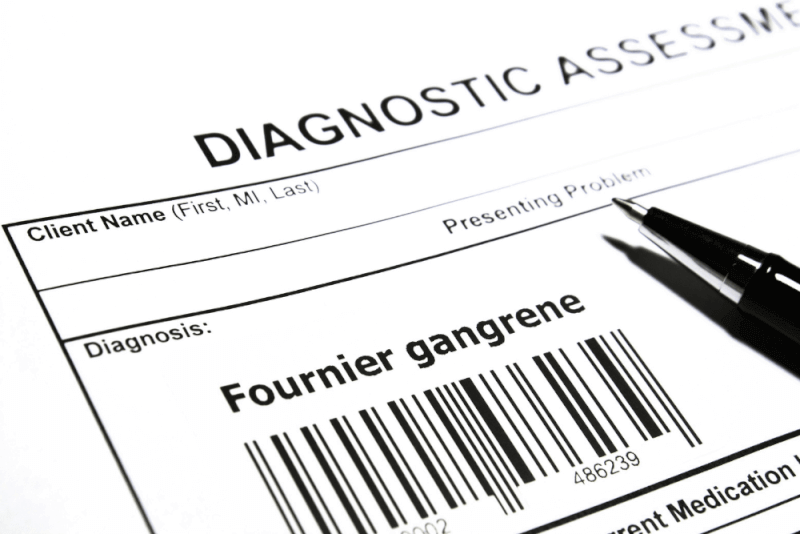What is ischemia?
The tissues in the body need oxygen to sustain their life and health. Blood is responsible for providing the oxygen needed by the tissues. Blood, which can reach all tissues through blood vessels, meets not only the oxygen needs of tissues but also their nutritional needs.
Blood flow to certain tissues can be slowed down or completely cut off due to clots or plaques that form inside the blood vessels, as well as external pressure on the blood vessels. This condition is called ischemia.
All tissues in the body have different nutrient and oxygen needs. They are therefore affected in different ways by the interruption or weakening of blood flow. For this reason, tissues in organs with a high metabolic rate, such as the brain or heart, are affected much more quickly. In addition, the damage is more severe due to the high oxygen and nutrient needs of tissues with a high metabolic rate.
Types of ischemia
Ischemia varies depending on the organ affected by the obstruction of blood flow. In addition, some researchers only differentiate ischemia as thrombotic and embolic.
Cardiac prompt
In cardiac demand, also called myocardial demand, blood flow problems occur in the vessels that support the heart muscle.
Cerebral ischemia
Cerebral ischemia, which is also divided into two, is caused by impaired flow in the blood vessels that feed the brain. The first type of cerebral ischemia is focal ischemia. In focal cognitive impairment, a specific area of the brain is affected by impaired blood flow. It manifests itself as a transient hysterical attack or stroke. The other type of cerebral ischemia is global ischemia. In global ischemia, a significant portion of brain tissue is affected.
Limb ischemia
Limb ischemia, a peripheral arterial disease, is caused by blockage of the blood vessels that supply the tissues in the arms or legs.
Mesenteric ischemia
It is caused by blockages in the blood vessels that are responsible for feeding the intestinal tissues. In addition, the type seen in the case of obstruction of the blood vessels feeding the large intestine is called ischemic colitis.
Cutaneous ischemia
It occurs as a result of congestion in the blood vessels that nourish the skin tissues.
Cyanosis
This is when the skin turns bluish or purplish due to various circulatory problems or low blood oxygen.
Gangrene
It is the name given to tissue death caused by the complete cessation of blood flow.
Thrombotic ischemia
It is the occurrence of blockages in the arteries that supply blood to any organ, causing obstruction of blood flow.
Embolic ischemia
It is a condition in which a blood clot or plaque that forms in any part of the body breaks off and flows to another part of the body and forms a blockage.
Ischemia diagnosis
Before the diagnosis of ischemia, specialists examine the patient's history, ask questions about complaints and perform a physical examination. Patients are then usually given the following tests to diagnose the claim.
- Doppler ultrasound
- Angiogram
- CT angiogram
- Magnetic resonance angiography
If specialists suspect myocardial ischemia, then the tests performed on patients include the following:
- Stress test
- ECG
- Thallium stress test
- Blood tests
- Holter monitor
- Cardiac catheterization
If ischemia is thought to develop in the brain, the following tests are ordered in addition to the initial tests:
- Brain MRI
- Auscultation of the neck arteries with a stethoscope
- Single photon emission computed tomography scan
- CT scan
- Digital subtracted cerebral angiogram
If ischemia is suspected in the legs, patients are additionally asked for the following tests:
- CT scan arteriogram
- Auscultation
- Ultrasound
- Ankle-arm index
Causes of ischemia
Basically, any cause that leads to a decrease or interruption of blood flow can cause a hysterectomy. However, among the most common causes that lead to the request are the following.
Narrowing of the vessel lumen
The narrowing of the lumen of the arteries, which is a precursor to potentially fatal heart attacks and is responsible for mild heart attacks, is also known as arteriosclerosis. Narrowing of the lumen of the vessel can be defined as the slowing of blood flow due to plaques that form in the vessel. This narrowing of the lumen is also one of the causes of peripheral vascular disease, where walking is severely restricted.
Blockage of the vessel lumen
Blockage of the lumen of a blood vessel due to rupture of plaques is also called embolism. The clots that form can block the vessel in which they are located or they can move within the vessels and block other vessels. The most common sites of embolism are the brain and pulmonary embolism. It is usually caused by rupture of clots in the veins of the legs. It is also common for plaques to rupture in severe heart attacks.
External pressure on the vessel
It is also possible for blood vessels to become blocked as a result of external pressure. For example, prolonged use of splints or casts may result in slowed blood flow as a result of compression.
Reduced blood flow
Different heart diseases cause the heart to work more slowly and its strength to slow down. These problems cause a serious reduction in blood flow. Reduced blood pressure also leads to insufficient nutrition of tissues with a high metabolic rate. For this reason, demand arises in these tissues. Slowing of blood flow is especially common in heart diseases associated with low blood pressure.
Inflammation of the vessel wall
Damage to the internal structures of the blood vessels by the immune system, a condition that occurs due to different autoimmune and rheumatologic diseases, is also one of the causes of the claim. This condition, also called vasculitis, causes blood flow to be interrupted.
Problems in oxygen transportation
Finally, the inability of red blood cells, which are responsible for the transportation of oxygen in the blood, to fulfill their duties sufficiently is also among the causes of the want. Conditions such as anemia or carbon monoxide poisoning are the most common causes that prevent red blood cells from carrying enough oxygen.
Symptoms of ischemia
Ischemia is a health problem that can be seen in different tissues. For this reason, the symptoms seen in ischemia vary depending on the damaged tissue.
Symptoms of myocardial ischemia
Symptoms that occur when ischemia affects tissues in the heart include the following:
- Fatigue
- Chest pain
- Fatigue
- Heart beats faster than normal
- Nausea
- Vomiting
- Pain radiating to the jaw, neck and arm
- Excessive sweating
- Shortness of breath
Symptoms of ischemia in the brain
Symptoms of damage to brain tissues due to insufficient oxygen and nutrients include the following.
- Inability to speak properly and clearly
- Severe and sudden onset of headache
- Inability to understand what others are saying
- Dizziness and vomiting accompanying headache
- Weakness in moving the body
- Fainting
- Lethargy
- Powerlessness
- Inability to move a part of the body
Symptoms of ischemia in the legs
Symptoms of ischemia in the leg tissues include the following.
- Wounds on the legs that do not heal
- Coldness in the legs
- Smooth and shiny skin on both legs and feet
- Weakness in the legs
- Pain in the legs that persists even at rest
Symptoms in case of mesenteric ischemia
In the event that impaired blood flow causes damage to the tissues in the intestines, the symptoms seen in patients include the following.
- Severe abdominal pain
- Nausea
- Vomiting
- Bloating
- Feeling unable to go to the toilet completely
- Blood in the stool
- Diarrhea
Ischemia treatment methods
Treatment of ischemia varies depending on the organ in which ischemia occurs and the underlying cause. However, the basis of the treatments is to restore normal blood flow in vessels where blood flow has been cut off or weakened. In addition, various treatments are applied for the affected tissues.
Treatment of myocardial ischemia
Both medical treatments and surgical procedures are used to treat myocardial ischemia. The drug groups used in the treatment of myocardial ischemia include the following.
- Aspirin
- Ranolazine
- Nitrates
- Angiotensin-converting enzyme (ACE) inhibitors
- Beta brokers
- Cholesterol-lowering drugs
- Calcium channel blockers
The above-mentioned medicines are groups of drugs used in both acute and chronic myocardial therapy. In addition to these medical treatment methods, interventional interventions to regulate blood flow can be used as part of the treatment. These initiatives include the following.
Angioplasty
Angioplasty, a procedure usually performed on the artery in the groin, is also called balloon therapy. When the tube-shaped device delivered in the vein reaches the blockage, the balloon-shaped part inside is inflated to open the blockage. In some patients, a stent is inserted at the site of the blockage to prevent recurrence of the blockage.
Bypass surgery
Basically, the operation in which the vessels that cause ischemia are replaced with other vessels taken from the body is called bypass surgery. It is an open-method surgery usually performed in cases that do not respond to angioplasty treatment or in cases of blockage in more than one vessel.
Treatment of cerebral ischemia
Ischemia in the brain is called cerebral ischemia. The methods used in the treatment of this health problem, which causes stroke and major tissue damage, are as follows.
Intravenous drug administration
In order for intravenous medication to be administered to patients, the patient must be admitted to a fully equipped hospital within 1 hour at the latest. Because the drug administered intravenously to patients in this method is a substance called tissue plasminogen activator, abbreviated as tPA. This medicine dissolves the clot that causes blockage of the blood vessels in the brain and improves blood flow. Thanks to this application, it is possible for patients to recover without serious problems in their brains. The faster the drug is injected into the patient, the lower the risk of permanent brain damage.
Endovascular procedures
In endovascular procedures, the application is made directly into the vessel where the blockage is seen. After endovascular procedures, a stent may be inserted to prevent recurrence of the blockage.
Treatment of ischemia in the leg
In the treatment of ischemia in the leg, there are different methods depending on the vessel and severity of the blockage. These medicines contain drugs that dissolve the clot. In addition, surgical interventions for myocardial ischemia are also applied.
Treatment of mesenteric ischemia
Acutely developing mesenteric ischemia requires urgent treatment. Because in these cases, a sudden blockage occurs in the vessels that provide nutrition to the intestinal tissues and the nutrition of the tissues stops suddenly. The tissues die because of this. A perforation can be seen where the dying tissues are located. A perforation of the intestine causes the contents of the intestine to empty into the abdominal cavity. Bacteria in the intestinal contents cause infection in the abdominal cavity. This leads to a serious clinical picture. To prevent this, dead intestinal tissues must be surgically removed.
If mesenteric ischemia is chronic, then treatments are used to restore blood flow. These include balloon and stent applications.
Complications of ischemia
Ischemia is associated with some complications. Some of these complications are life-threatening:
Heart
Complications caused by Cardiac Ischemia include the following.
- Heart attack
- Irregular heart rhythm
- Heart failure
- Chest pain
- Sudden death
Brain
Cerebral ischemia, the death of part of the brain tissue, can cause paralysis.
Leg
Complications caused by this type of ischemia, called critical limb ischemia, include intense pain and limb loss.
Intestines
Intestinal perforation is the leading complication caused by mesenteric ischemia.
Risk factors of ischemia
Causes that increase the risk of ischemia include the following:
Tobacco use
Smoking and exposure to cigarette smoke causes damage to the inner walls of the arteries. This damage to the blood vessels leads to the accumulation of cholesterol and other substances. This results in a slowing of blood flow. In addition, tobacco use can cause coronary artery spasm and increases the risk of clot formation.
Diabetes
Both type 1 diabetes and type 2 diabetes are diseases that increase the risk of cardiovascular diseases. This leads to an increased risk of ischemia.
Hypertension
In people with long-standing hypertension, atherosclerosis can accelerate, leading to damage to the coronary arteries.
High cholesterol level
High cholesterol levels cause narrowing of the blood vessels. The narrowing of the blood vessels weakens blood flow and increases the likelihood of ischemia.
High blood triglyceride level
Triglycerides, another type of blood fat, are also among the causes of atherosclerosis.
Obesity
Obesity is one of the main causes of many metabolic diseases, especially hypertension. Therefore, it is among the factors that increase the risk of ischemia.
Lack of physical activity
Not exercising regularly and adopting a sedentary lifestyle leads to health problems such as obesity, high blood pressure and cholesterol. In addition, a sedentary lifestyle leads to weakening of the cardiovascular system. All these factors increase the risk of ischemia.
Ways to prevent ischemia
To prevent ischemia, it is necessary to adopt a healthy lifestyle. For this, the following are among the things that should be considered as a priority:
- Including more vegetables and fruits in the diet
- Exercising regularly
- Reducing stress and utilizing various methods for this purpose
- No smoking
- Keeping health problems such as hypertension and diabetes under control
- Regular medical check-ups










K** T** | 26 Mar 2025